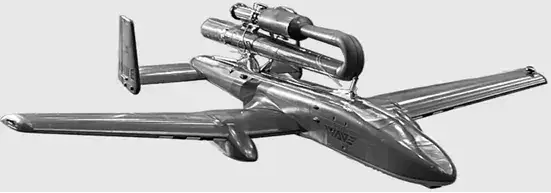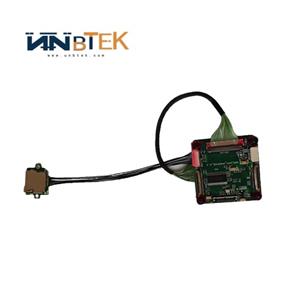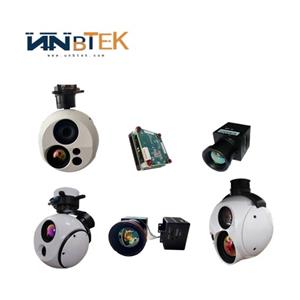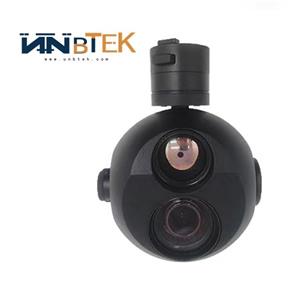Unmanned Aerial Vehicle Engines, Why Should It Be Them?
In today's tense global situation, it is not difficult to observe the large-scale application of unmanned combat, particularly the use of unmanned aerial vehicles (UAVs) in warfare. UAVs have been extensively utilized as a main combat weapon in conflicts such as the Russia-Ukraine conflict, the Israel-Palestine conflict, and the Red Sea crisis. Therefore, the further development of UAV equipment becomes a key factor in gaining the initiative in warfare. The American company Wave Engine suggests using Pulse Air Jet Engines (PUVRD) on UAVs. What are the advantages of pulse air jet engines? And what are their development and application prospects?

The history of pulse jet engines can be traced back to the early days of aviation exploration. Based on the principle of generating thrust through combustion, early scientists began experimenting with generating thrust through periodic combustion, laying the foundation for the development of pulse jet engines. Pulse jet engines mainly consist of two parts: the compressor and the jet device. First, air enters the engine through the compressor, which compresses the air and injects it into the combustion chamber. In the combustion chamber, fuel is injected and mixed with the compressed air. The mixture is then ignited, producing high-temperature, high-pressure gas. Finally, the jet device starts to work, ejecting the high-temperature, high-pressure gas to generate thrust. The entire process is cyclical, and by continuously repeating this cycle, pulse jet engines can continuously generate thrust, driving aircraft such as UAVs to fly. This unique form of jet engine has gradually attracted attention, providing a new power option for aircraft. With technological advancements, the design of pulse jet engines has been gradually improved and optimized. During World War II, Nazi Germany conducted extensive research and application of pulse jet engines to advance its missile technology. They used these engines to power V-1 missiles and successfully bombed London. The unique structure of pulse jet engines brings significant advantages, which are well compatible with UAVs. Firstly, pulse jet engines have a simple and compact structure, making them highly suitable for small UAVs. UAVs usually require lightweight and efficient power systems, and pulse jet engines meet these requirements, reducing the overall weight and volume of the UAVs, thereby enhancing their maneuverability and flexibility. Secondly, pulse jet engines have high combustion efficiency, meaning they can provide longer flight times and higher flight speeds with the same fuel consumption. This is particularly important for UAVs, especially in scenarios requiring long-duration, high-speed flights or complex missions. Additionally, the working frequency of pulse jet engines can be adjusted through design, allowing for precise control of the UAV's thrust. This precise thrust control helps improve the UAV's flight stability and maneuverability, enabling it to perform excellently in complex environments and tasks. Lastly, although pulse jet engines may produce significant noise in some situations, this noise issue can be mitigated to some extent in UAV applications through technical means. For example, by optimizing engine design, employing noise reduction techniques, or adjusting flight altitude and speed, the impact of noise generated by UAVs during mission execution on the surrounding environment can be reduced. In early March, the American company Wave Engine began testing a UAV equipped with a pulse jet engine, the Scitor-D, and released a test video. According to official data, Wave Engine's pulse jet engine is a type of engine that operates using pressure waves rather than rotating machinery. Its working principle is to generate pressure waves through intermittent combustion in a hollow tube, propelling hot gas and producing thrust. This engine has advantages such as no moving parts, high jet performance, and Full Authority Digital Engine Control (FADEC), providing high-performance propulsion in a low-cost, efficient power unit.

For the Scitor-D UAV, it has a slender fuselage with a wingspan of 3 to 3.5 meters, and the pulse jet engine is mounted on top of the fuselage using a fixed device. Its tail is shaped like an "H" to effectively prevent interference with the normal operation of the engine. Its maximum flight speed can reach 370 km/h. However, the flight range and duration of the Scitor-D equipped with a new type of pulse jet engine with an efficient power supply method remain unknown. Today, the application prospects of this UAV are very broad. The company has signed a contract with the U.S. Air Force Equipment Bureau to develop technology crucial for future aviation and air combat for the U.S. Air Force. They are already using this engine technology to design and build a versatile air-launched platform (VALP) mainly used for multiple tasks such as decoys. This VALP, utilizing Wave Engine's proprietary engine technology, demonstrates the potential of high-performance, low-cost propulsors in next-generation high-performance aircraft.

In summary, the American company Wave Engine has successfully reduced the cost and complexity of jet propulsion through the application of pulse jet engines, demonstrating their significant potential as high-performance, low-cost propulsors. The technology and products of pulse jet engines not only have broad application prospects in the military and UAV fields but may also play a significant role in civilian aviation and other areas in the future.




